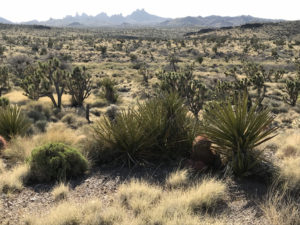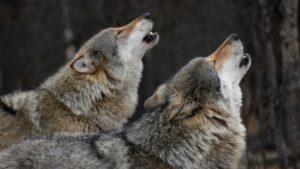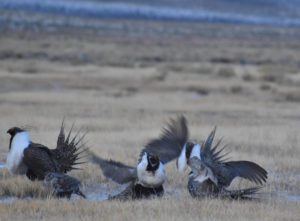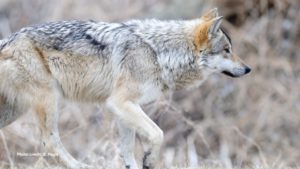For immediate release: January 14, 2021
Contacts:
Kelly Nokes, Western Environmental Law Center, 575-613-8051, nokes@westernlaw.org
Cyndi Tuell, Western Watersheds Project, 520-272-2454, cyndi@westernwatersheds.org
Dana Johnson, Wilderness Watch, 208-310-7003, danajohnson@wildernesswatch.org
Today, conservationists challenged a U.S. Forest Service decision that would allow livestock grazing across 271,665 acres of the Greater Gila bioregion in the Apache-Sitgreaves and Gila National Forests in Arizona and New Mexico over a 10-year period. This massive project, known as the “Stateline Range grazing project” has significant implications for endangered Mexican wolves, water resources, wilderness values, and riparian habitats in one of the Southwest’s most treasured landscapes.
“The enormous scope of the Stateline Range grazing project, not to mention the ecological richness and sensitivity of the Greater Gila bioregion, demand more than just a cursory environmental review,” said Kelly Nokes, an attorney with the Western Environmental Law Center. “It is beyond the pale that the Forest Service concludes that the continuation of grazing across these unique habitats –– which include the nation’s first designated wilderness area, the Gila Wilderness, as well as lands that are essential to the recovery of the endangered Mexican wolf –– has no significant impact.”
The Greater Gila bioregion is vital to the recovery of the critically imperiled Mexican wolf. The entire project lies within the heart of Management Zone 1 of the Mexican Wolf Recovery Area, but the Forest Service’s assessment fails to mention this important fact. Nor did the agency consider the special management implications of this essential landscape to wolf recovery. This region represents some of the most suitable habitat for Mexican wolf recovery in the world. Yet, removals of Mexican wolves in this region due to livestock conflicts is one of the biggest threats impacting the recovery of the species in the wild.
“In the face of drought, climate change, and harassment from humans, the Mexican gray wolf has managed to eke out a tenuous living in eastern Arizona and western New Mexico,” said Cyndi Tuell, the Arizona and New Mexico director for Western Watersheds Project. “Instead of supporting the recovery of this species on the brink of extinction, the Forest Service has abdicated their responsibility to protect not only wolves, but all other wildlife, native fish and native plants in favor of the livestock industry’s interests in making a profit off of public lands.”
It is well documented that livestock grazing has detrimental impacts on plant communities and water quality. Livestock grazing causes soil compaction and increases the potential spread of noxious and invasive weeds in ecologically sensitive areas. Further, the Forest Service’s environmental assessment fails to acknowledge present drought conditions or climate change.
The project includes portions of two federally designated wilderness areas, including the nation’s first, the Gila Wilderness, as well as the Blue Range Wilderness. More than 21,589 acres of the Stateline Range allotments are located within these wilderness areas. The project area also includes 33,495 acres of the Blue Range Primitive Area, which is generally managed as wilderness and has been protected to conserve its remarkable wilderness values.
“The massive Stateline Range grazing project is a significant threat to the Gila Wilderness, the Blue Range Wilderness, and the Blue Range Primitive Area, all of which are protected because of their exceptional untrammeled, undeveloped, and ecologically critical character,” said Dana Johnson, staff attorney with Wilderness Watch. “These areas provide refuge to wildlife squeezed into increasingly scarce pockets of wild, secure habitat, and now the Forest Service is opening the gates to thousands of cows and the development that comes with them—fencing, pipelines, storage tanks, water troughs—without any serious consideration of the impacts to this spectacular landscape.”
The project also presents concerns for public health and safety, specifically, negative water quality impacts associated with grazing from E. coli contamination. The project area includes three stretches of rivers that have been deemed eligible for inclusion in the National Wild and Scenic Rivers system, and six river stretches designated as Outstanding National Resource Waters. Allowing livestock to continue to trample and defecate in and near these vital water bodies is guaranteed to worsen water quality at already impaired waterways and pristine waterways alike. Increased water withdrawals for livestock will worsen already historically dire drought conditions as well.
The Western Environmental Law Center represents Western Watersheds Project and Wilderness Watch in the litigation.
###





